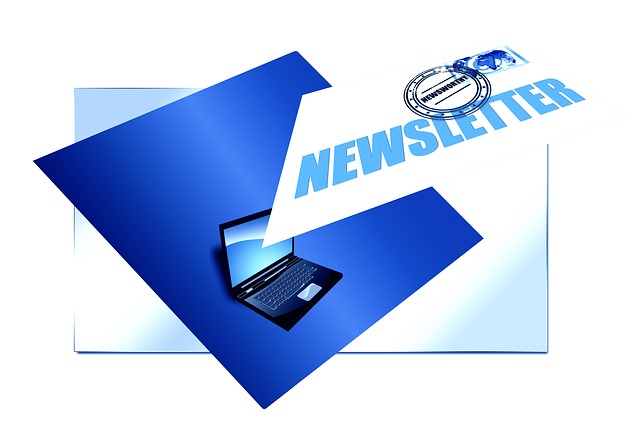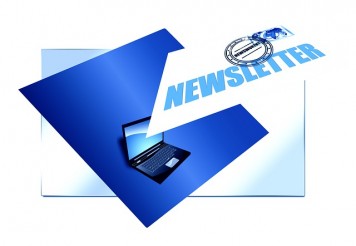How to write an effective newsletter
28 July 2014 By Northern Lights

I’ve spoken a lot about the need for effective communication in our blog – both internal communications and external communications – and in this latest instalment I’m looking at the value of company newsletters.
 Newsletters are often overlooked by businesses but, by following a few basic rules, are a hugely powerful marketing tool and a great way of engaging, motivating and inspiring your workforce.
Newsletters are often overlooked by businesses but, by following a few basic rules, are a hugely powerful marketing tool and a great way of engaging, motivating and inspiring your workforce.
If you search online for newsletter writing tips, the same basic principles crop up again and again. Newsletters are useful for raising awareness of your business and brand, a fantastic way for showcasing your expertise and promoting your products and services, a great way to maintain contact with clients, target customers and staff while also seeking feedback and ideas, and are ideal for boosting coverage across your target audience and introducing your business to a wider pool of potential clients.
Our newsletter, and those we produce for a number of clients, is all about raising awareness, showcasing expertise, sharing insights and adding value to a range of contacts.
What should I include in my newsletter?
The first golden rule with newsletters is to make sure they have genuine value. If you just send out a newsletter that does nothing more than promotes your products, services and latest offers, readers will quickly switch off and unsubscribe.
You have to be generous with your insights, experiences and expertise. By helping staff and customers overcome the challenges they face, you will quickly become a trusted resource and every one of your readers will hungrily await the next instalment.
Newsletters must educate, inspire and provoke thought and conversation. You have to draw the reader in and then keep them hooked.
It’s a great source of pride here at Northern Lights that we receive a wide range of comments from our own newsletter readership about how it forces them to rethink their own strategies and consider new ideas. You should be aiming to do the same with your own.
What content should I include in my newsletter?
Content can come from a variety of sources. In our case, we use content from our blog to share our insights and thinking, but that responds to the latest trends in business and to a variety of topical issues. For most businesses, the best thing to do is to speak to staff and customers and find out what issues are causing them the biggest headaches. You can then write content based around those questions sharing your ideas and experiences in tackling these issues.
but that responds to the latest trends in business and to a variety of topical issues. For most businesses, the best thing to do is to speak to staff and customers and find out what issues are causing them the biggest headaches. You can then write content based around those questions sharing your ideas and experiences in tackling these issues.
It’s also worth reacting to topical issues or celebrating company and staff achievements. Regardless of what you write, you need to share your own thoughts and insights to help showcase your expertise and help readers understand exactly who you are and what you do.
Also, keep it brief. If you’re emailing the newsletter out, include a maximum of four short stories with links to your own site or other resources if people want to read more. If it’s a printed newsletter, it’s better to keep it to two sides of A4 with three or four stories a side.
Readers want quick, informative updates that enhance their understanding of your business and the sector they are in. If you start producing lengthy, complex documents, your readers will be overwhelmed and won’t bother wading through to find what’s relevant to them.
If you’re just looking to produce an internal newsletter, the same rules apply, but it’s also important to celebrate staff achievements, promotions, retirements, etc. and showcase the personalities in the business. Newsletters are great for revealing the person behind the management titles and help to open up stronger channels of communication throughout the business by building relationships between departments.
I’d always argue that it’s worthwhile sending internal newsletters to existing clients as it helps them to develop a deeper understanding of the business and create a more personal bond that becomes harder for them to turn their back on. Arguably, there shouldn’t be a distinction between internal and external newsletters as your staff will be just as interested as your customers in what the business is doing.
How do I use a newsletter to promote my business?
 Having said all that, it’s also important that you weave in a wide range of promotional messages into your newsletter to attract new business. By tackling the content mentioned above, you begin to demonstrate the full breadth of your offer and the experience and skills within your business.
Having said all that, it’s also important that you weave in a wide range of promotional messages into your newsletter to attract new business. By tackling the content mentioned above, you begin to demonstrate the full breadth of your offer and the experience and skills within your business.
Make sure each story is coupled to a product or service you can offer to help address the issue. Again, just aim to link it to the relevant section of your website if it’s an e-bulletin, or if it’s in print, include a very short description about how you can help.
Newsletters are about demonstrating your offer and, in addition to winning new clients, they are extremely useful in winning more business from existing customers who don’t always understand everything you do.
By demonstrating your understanding of the issues customers face and showing the solutions you can provide, you will quickly establish yourself as an industry leader who can deliver trusted and proven solutions.
It’s also worth considering offer exclusive discounts and offers to newsletter readers as that can also help to build up a loyal following.
How often should I send out a newsletter?
This can be a tricky problem for many businesses and you should never send out a newsletter just because it’s in your diary as a “to do”. Make sure you have some quality content to send out first.
That said, I recommend you aim to send out a newsletter once a month. Newsletters are an excellent tool for keeping you front of mind with customers and contacts and for developing strong relationships. If you can’t manage to do it once a month, call in some expert support or at least make sure your updates are regular so people know when to expect the next.
How do I make use of my newsletter?
Newsletters are an inexpensive way of marketing your business to a targeted audience and they can shorten the sales process significantly.
In the case of e-bulletins, there are a wide range of cheap production and distribution systems online. The real strength of these systems is that you can track exactly what happens with each newsletter.
In true Big Brother fashion I can see who opens the newsletter, what was read and, most importantly, which links where clicked. This quickly shows me exactly what people are interested in and ensures I can then follow up with a call to see if we can move on to the next stage and start working together around that specific product or service.
It’s this follow-up process that can deliver the most effective results for your business as that simple act of clicking on a link shows they are already considering buying.
 In the case of printed newsletters, it’s a case of working with your sales teams to create a target list of the businesses that will gain the most from the content included in that newsletter and then following up with calls to see if they would like more information or a meeting to discuss it further.
In the case of printed newsletters, it’s a case of working with your sales teams to create a target list of the businesses that will gain the most from the content included in that newsletter and then following up with calls to see if they would like more information or a meeting to discuss it further.
It’s also worth closely following your website activity with tools like Google Analytics to see if your newsletter is having an impact on traffic to specific parts of your online portal.
What is the value of a newsletter?
With your website, you have just a few seconds to grab the attention of any visitor before they move on. Blogs are powerful for getting you to the top of the search rankings, but they relate very specific topics and, in most instances, people will have to navigate through your site to find it. Similarly, social media is fantastic for promoting your brand and offer, but these updates can easily be missed.
With a carefully crafted newsletter that includes short and vivid insights, people are more willing to invest a few minutes in catching up on your business and learning from your expertise.
Newsletter use has grown dramatically in recent years (almost 80 per cent of businesses now send out regular updates) and research by the Nielsen Norman Group showed that 90 per cent of those in the B2B sector now prefer to receive company updates in the form of newsletters – just 10 per cent cited social media.
Put simply, every business needs a strategic approach to marketing that ensures you can attract new customers and grow and maintain relationships with existing clients. Developing a newsletter programme with a solid and engaged audience is the logical step.
I’d love to hear about your own experiences with newsletters and if I can help in any way to develop your own newsletter programme, just get in touch.
